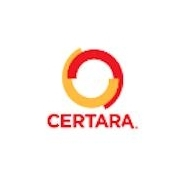
Certara, the global leader in model-informed drug development and regulatory science, announced that the US Food and Drug Administration (FDA) has granted approval for expanded use of its PBPK Simcyp Population-based simulator and its paediatric and cardiac safety simulators. Under the new agreement, FDA has almost tripled its number of licenses, equipping its M&S review team with almost 60 PBPK licenses.
Furthermore, FDA has been a Simcyp Consortium affiliate since its inception in 2003. The Consortium, which now has 36 leading biopharmaceutical member companies and numerous global regulators and academic centers as affiliates, serves as a collaborative research center for PBPK and mechanistic modeling focused on the prediction of pharmacokinetic/pharmacodynamic outcomes in virtual patient populations.
“M&S is increasingly being recognized as a smart scientific stride toward reducing drug development costs, making the drug review process more efficient, and ultimately helping to cut the costs of new medicines,” said Stephen Toon, BPharm, PhD, president and managing director of Certara’s Simcyp division. “We are delighted to see the agency recognizing in both the PDUFA and GDUFA the value that mechanistic PBPK M&S can provide by answering ‘what if’ drug development questions and informing drug labels. Certara’s primary goals are to improve the efficiency of the drug development process and help get safer, more effective medications to patients who need them. We are partnering with the FDA and other global regulatory agencies to achieve those shared goals.”
FDA’s Center for Drug Evaluation and Research is currently using M&S to predict clinical outcomes, inform clinical trial designs, support evidence of effectiveness, optimize dosing, predict product safety, and evaluate potential adverse event mechanisms.
The agency is also collaborating with Certara on research in this area. FDA’s Office of Generic Drugs awarded a multi-year research grant to Certara and the University of Leuven in Belgium in October 2016 to create and validate a PBPK M&S framework that will enable the Simcyp Simulator to simulate and predict the behavior of supersaturating orally-dosed drug products in the human gastro-intestinal tract. This research facilitates virtual bioequivalence assessments that can expedite bringing newer, complex generic drugs to market.
Certara was also awarded an FDA GDUFA grant to develop a multi-phase, multi-layer skin model. This new model facilitates the virtual bioequivalence assessment of two drug formulations such as cream versus gel or the same formulation type with a different pH, viscosity or base. The model takes into account a range of mechanisms that play an important role in dermal absorption, such as skin surface pH, dermal hydration, skin appendages, binding to keratin, and drug-physiology interactions.
In addition, FDA’s Center for Veterinary Medicine has a Cooperative Research and Development Agreement (CRADA) with Certara until 2020 to create additional Simcyp PBPK canine models to help streamline veterinary drug development and evaluation.
Certara’s Simcyp Simulator is the pharmaceutical industry’s most sophisticated platform for determining first-in-human dose selection, designing more efficient and effective clinical studies, evaluating new drug formulations, and predicting drug-drug interactions and pharmacokinetic outcomes in clinical populations. These include vulnerable populations such as paediatric patients, pregnant women, and patients with impaired organ function.
In addition to the Simcyp Simulator, FDA has also equipped its pharmacometrics team with Certara’s Phoenix software. Phoenix is the industry’s premier software platform for managing, analyzing and reporting pharmacokinetic, pharmacodynamic, and toxicokinetic data.
Us fda grants expanded, certara\'s pbpk simcyp, population-based simulator